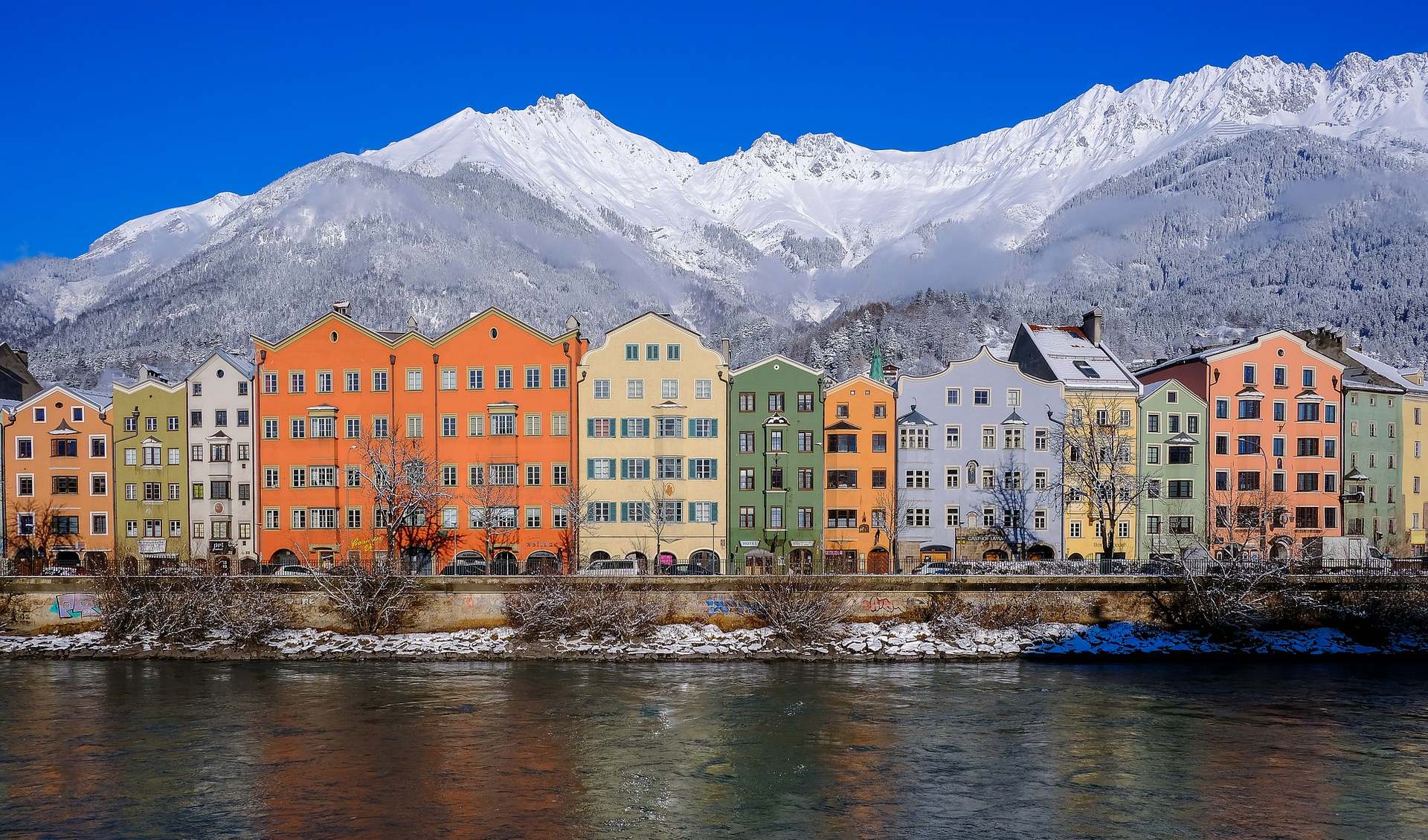The New Year is just around the corner. The Christmas markets have closed, and the tourists who like to celebrate their holidays abroad have gone home. It's time for quiet walks through Vienna, museums, coffee houses and Viennese desserts.
How about a few days of sightseeing and a ski resort trip? The snow is knee-deep, and the slopes are well-groomed for skiers. Or, maybe you would like to improve your health at a respectable spa? The healing waters and picturesque mountain scenery have a remarkable effect. Read about all the options for a January holiday in Austria with children in this article.
Contents
- Pros and cons for traveling to Austria in January
- The weather in Austria in January
- Air temperature
- Alpine skiing
- Alpbach-Wildschenau
- Bramberg-Neukirchen
- Salzburgerland - Spa resorts
- Excursion programs
- Family entertainment
- Holidays, events and festivals
- Cost of vacation
- Shopping
- Helpful tips for travelling with children
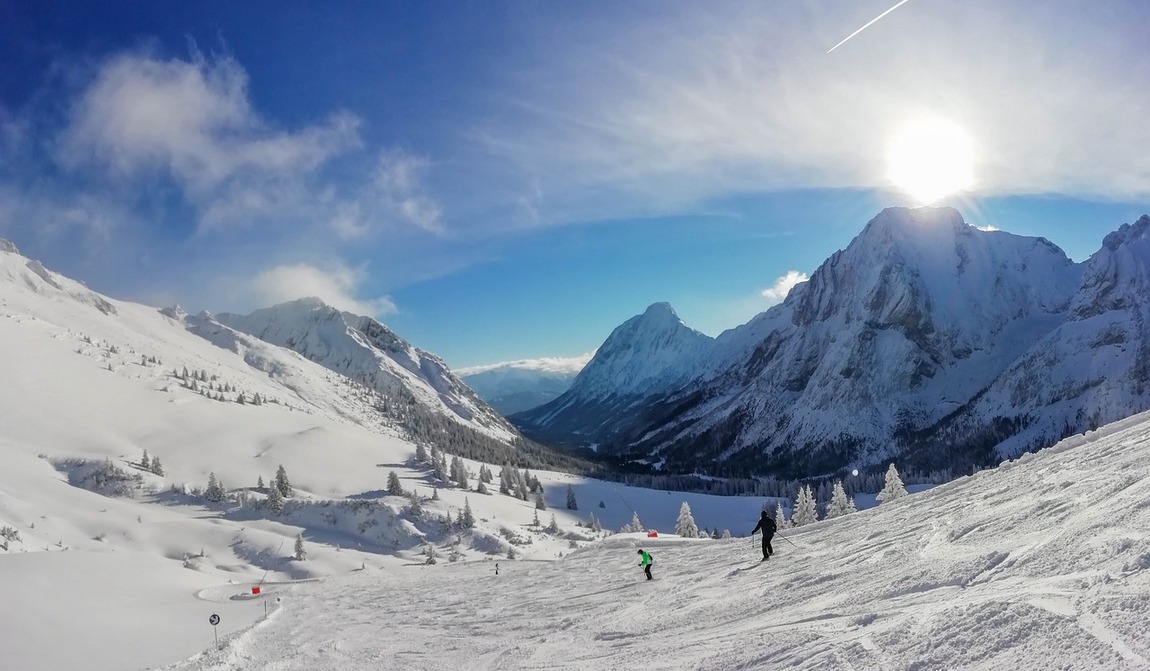
Photo: pixabay.com
Pros and cons for travelling to Austria in January
There are several keywords in reviews of the January holidays in Austria: Vienna, skiing, spas and balls. If it needs explaining, it is only to highlight the positives.
- After Christmas and New Year's Eve, airfares, tours and hotel prices drop.
- Vienna's museums have far fewer tourists than in December or summer.
- Ski resorts are less crowded than in February and March.
- The children's programme is almost as varied as in the warmer months.
- Winter sales include designer clothes and ski equipment.
There are no significant disadvantages to travelling to Austria in January. To visit Vienna, you must adapt to the changeable weather. The short daylight hours are a problem in the mountains — although with the après-ski programme, this is hardly a serious issue. So, it's time to move on from daydreaming and start planning your January holiday in Austria. The first thing to do is check the weather forecast.
The weather in Austria in January
If you are travelling to Austria in January with a child, your luggage will be pretty much the same, regardless of the purpose of your trip. The mountains are cold and snowy in winter — ski wear, fleece, and thermal underwear will be handy. In Vienna, temperatures rarely drop below freezing — it's more likely to rain than snow — but you may want to bundle up on a windy and humid day.
The weather in January and February varies from region to region. The higher up in the mountains, the harder the frost and the more frequent the snowfall. The capital is overcast and relatively warm.
The weather in early January is more popular with tourists who want to spend the New Year in Austria. In Vienna, it rarely snows during the holidays, and the temperatures make it possible to walk around the city and look out for the Three Kings trick-or-treaters. The weather in Austria at the end of January suits skiers: there is plenty of snow in the mountains, and the resorts are free of bitter frost, so you can ski as much as you like.
Air temperature
The climate varies between eastern and western Austria. The east is the plain; January is mild with little snow. The west is mountainous and has a real winter. Here's an overview of the January weather in different parts of the country:
| Resort | Daytime | Nighttime |
|---|---|---|
| Vienna | +2,1°С | -0,9°С |
| Salzburg | +1,3°С | -3,7°С |
| Innsbruck | -1,4°С | -7,8°С |
| Alpbach-Wildschenau | -1,2°С | -6,0°С |
| Bramberg-Neukirchen | -4,0°С | -10,5°С |
| Salzburgerland | -2,9°С | -7,6°С |
| Bad-Gastein | -3,1°С | -10,7°С |
Daytime temperatures in Austria in January vary significantly from region to region. In Vienna, the temperature ranges from -3°C to +10°C; in the mountains it can be -12-15°C to +3-5°C. At night, the temperature in the capital can be as low as -1-3°C, while in the ski resorts it reaches to -3°C to -20°C.
Alpine skiing
Around 70% of Austria is mountainous, and the number of ski resorts in the country is impressive — over 400. Winter holidays in the Austrian Alps are not cheap, but the ski resorts have other advantages:
- A variety of slopes;
- Modern ski infrastructure;
- Perfect Aprés Ski & Night Gastronomy;
- Europe's best children's ski schools;
- An excellent range of family entertainment.
Early January is considered high season. From the second or third week, ski passes get slightly cheaper, and hotels also reduce their prices. The second half of January is not as busy as the Christmas and New Year weekends, but the slopes are not empty. February sees a new influx of skiers.
Alpbach-Wildschenau
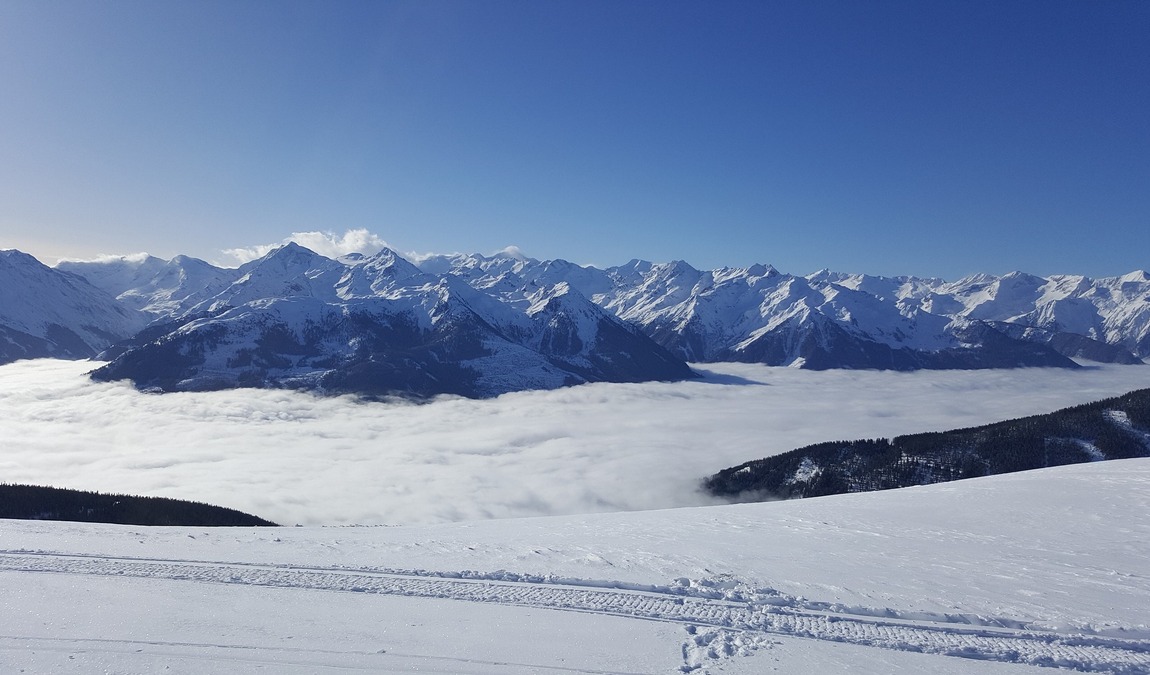
Photo: pixabay.com
One of Tyrol's biggest ski resorts opens its season in early December. And in January, the temperature stays between -9°C and +4°C during the day and -2-12°C at night, with frequent snowfall, forming the much-loved downhill fresh powder. There are few sunny days, and the sky is mostly grey.
The Ski Juwel resort is situated at 1500-1900 metres. There are about 145 km of pistes in the resort. Most are for experienced skiers, but about a third are blue runs for beginners. The resort also offers night skiing, freeride areas and two snow parks.
Children can learn to ski from the age of 3-4. The ski schools have areas for children's lessons with separate learning ski lifts and special simulators. The resort offers kindergarten services for parents who come to the mountains with their children. Off-piste activities include tobogganing (there are several kilometres of toboggan runs) and ice skating (there are indoor and outdoor ice rinks in Alpbach). Skiing and snowshoeing in the Austrian forests are also popular.
Entertainment is modest, but there are plenty of places of interest nearby. Innsbruck is 50km away, with the Swarovski Museum and Alpine Zoo as its main attractions. Children will enjoy a trip to the Schwaz silver mine and the mediaeval town of Rattenberg. The castles of Trazberg and Kufstein are not far away.
A significant advantage of the resort is its relatively low prices. It is cheaper than many Austrian resorts.
The resort of Alpbach-Wildschenau includes several villages. The most convenient places to stay are Innerlpbach or Auffach, where accommodation is close to the main lifts. Other towns have small ski areas, and the main ski lifts can be reached by ski bus.
Bramberg-Neukirchen
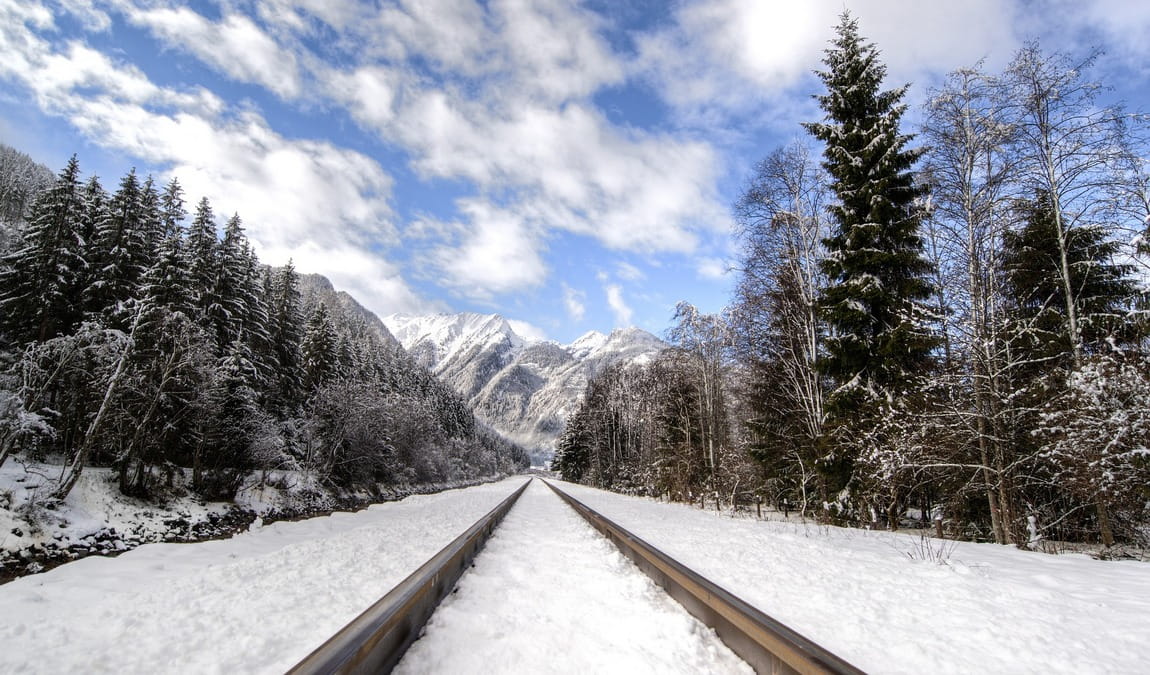
Photo: pixabay.com
Bramberg-Neukirchen is equally close to both Salzburg and Innsbruck airports. Once you arrive, take the train, and you'll be at the Wildkogel Arena in just a few hours.
January in the resort is frosty and snowy. Daytime temperatures rarely drop below -2-5°C, but at night, it can get as low as -20°C, although the average night-time temperature is around -10°C. The snow is thick enough by December, and frequent snowfalls renew the snow cover on the slopes.
The Wildkogel Arena is a relatively small resort with pistes ranging from 820 to 2150 metres. There are around 75 km of pistes, with an equal mix of easy and challenging runs. As a rule, skiers who enjoy a variety of skiing buy an extended ski pass, which allows them to ski in the Zillertal Arena area, or a single ski pass for all the resorts in Salzburg. Ski schools offer playful lessons for children. The snow towns of Bramberg and Neukirchen are the place to be.
Tobogganing is a great way for the whole family to relax. The Wildkogel Arena has built a 14-kilometre toboggan run, the longest in Europe.
There is also an ice rink, curling rink, skiing, snowshoeing and horseback riding. The evening torchlight walk is exciting. Bramberg has a small historical museum. You can also visit Innsbruck or Salzburg or the Swarovski Museum in the small town of Wattens. Both Bramberg and Neukirchen are suitable for children. The resort is bustling during the holidays; in mid-January, it gets a little quieter.
Salzburgerland
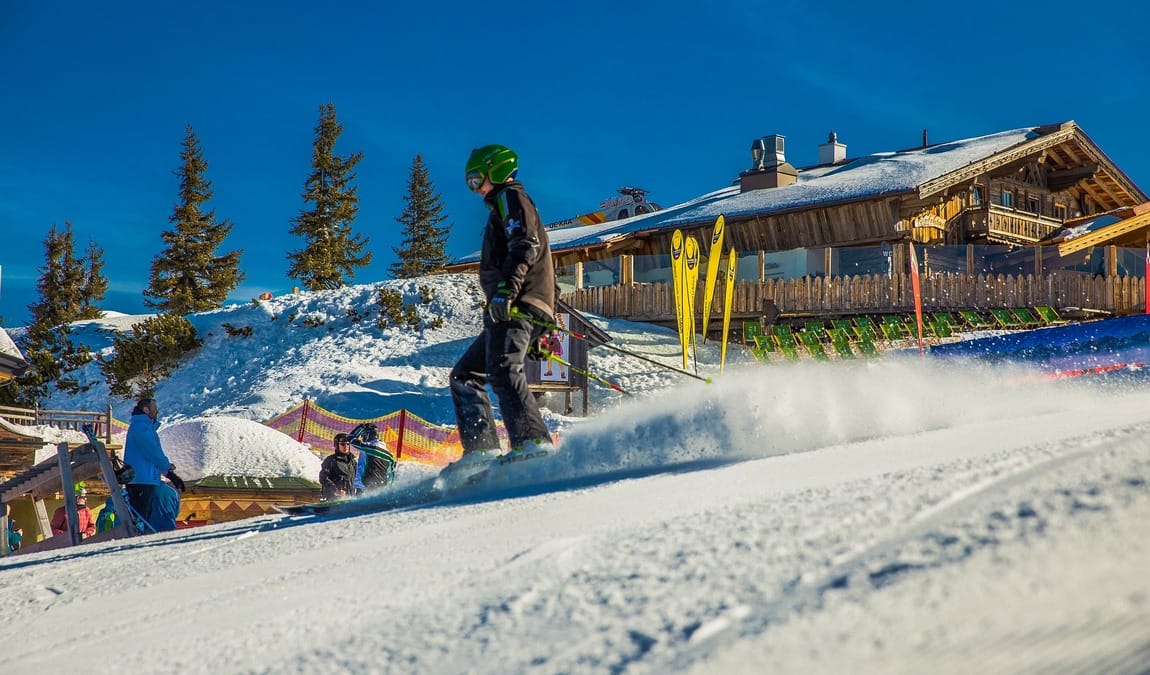
Photo: pixabay.com
The largest resort in the Ski amadé is open all winter and half of spring. In January, temperatures range from -4-8°C during the day to -9-13°C at night. There are also night frosts of -20-25°C, which do not last long. The snow cover in mid-winter is perfect, helped by frequent snowfalls. The weather is overcast mainly, but there are also sunny days.
The main reason for choosing the Salzburger Sportwelt is the 180 pistes totalling 760 km. There are several kilometres of slopes, and the longest slope is 10,440 kilometres long.
The resort consists of nine ski zones. The best areas for children are Wagrain and Eben: they have the most exciting children's ski learning areas and the most fun ski schools. The smaller areas of Radstadt-Altenmarkt and Filtzmoos are also suitable for families. There are also areas for deep-snow skiing, a snow park and cross-country ski trails. Ski pass prices in the Salzburger Land vary in January. The price drops slightly after the holidays and rises again at the end of January.
What else can you do at the resort besides skiing? For those who don't mind the cold, there are 17 toboggan runs. If you want to warm up, try the Filzmos, Wagrain or Altenmarkt water fun centres. Salzburg is an excellent place for day trips, and the Radstadt and Flachau castles are well worth visiting. A big plus for the Salzburger Sportwelt is the family-run hotels and aparthotels. There is a wide range of accommodation in the resort towns.
Spa resorts

Photo: facebook.com/tiroltherme
Where to go in Austria in January when sightseeing or skiing is too active? It's lovely to soak up the winter chill at a thermal spa. The Aqua Dome pools near Sölden are outdoor pools with views of the glaciers. There is also an indoor mini aqua park for children.
The Alpentherme complex in the spa town of Bad Gastein is also suitable for families, as it's equipped with a small water park. The Roman baths in Baden are filled with water from sulphur springs and are used to treat musculoskeletal disorders. The children's pool uses normal water. Vienna has a huge thermal spa, Therme Wien — a great attraction for kids.
It should be noted that children under 12-14 are generally not allowed in the saunas at thermal spas. While parents relax in the steam rooms, children can spend time in the playrooms.
Excursion program

Photo: pixabay.com
There isn't a single day of the year when tourists don't stroll through Austria's cities. Even if it is cold, January is no reason not to go. Vienna's coffee, Sacher cake and warm strudel taste even better once you've visited the museums and strolled through the winter streets.
The most attractive city for tourists in Austria is, of course, Vienna. If the weather is nice, it's best to start by walking around the city and taking in the sights. What's more attractive: the neo-Gothic City Hall, the Renaissance Hofburg, the Romanesque St Stephen's Cathedral or the modernist Hundertwasser House?
The cooler weather is an excellent opportunity to spend time in museums. There's a vast selection to choose from:
- Schönbrunn Palace museums (young tourists especially like the Children's Museum);
- The Belvedere Gallery, where Gustav Klimt's The Kiss is on display among other masterpieces;
- Museum of Art History with paintings by Titian, Dürer and Bruegel the Elder;
- The Habsburg Armoury with a considerable collection of ceremonial arms and armour;
- Madame Tussauds Wax museum (after this tour, children are more interested in hearing about Empress Sisi or Sigmund Freud);
- The Technical Museum with multimedia systems and a science and game exhibit for children;
- The Museum of Natural History, where you can learn how the mummy of the ancient man Otzi was discovered (the mummy itself is preserved in a museum in Bolzano, Italy).
Many museums in Vienna offer free admission for children under 18. Adults can also benefit from the Vienna Pass, which offers free travel on public transport and discounts at museums.
The Austrian capital has a unique children's museum called Zoom. It's an interactive space for children from 8 months to 14 years old, and it's hard to persuade a child to leave. The House of Music also caters for young visitors. Here, you can touch music and walk among the sounds.
There are just as many winter tourists in Salzburg. Even if you're heading to the ski resorts, it's worth staying for a day or two and visiting Hohensalzburg Fortress, Helbrunn Palace and the Mozart House. Children will love the Toy Museum and the House of Nature.
Innsbruck, also on the way to the ski resorts, has several attractions: the Hofburg Palace, the Swarovski Museum, the Bell Museum and the Tyrolean Folk Art Museum.
Entertainment for children
In January, there is less family fun in Austria than in the summer: the big amusement parks and the water playgrounds popular with children are closed. What can you do to make up for it?
First of all, you could go to the zoo. Vienna's Schönbrunn Palace is home to Europe's oldest zoo, and Innsbruck's Alpenzoo is the highest zoo in Europe. If seeing animals makes children happy, you should also visit the Sea House in Vienna. Much of the 9-storey building is devoted to aquariums with exotic fish and an exhibition of reptiles, insects and spiders. A visit to the Butterfly House is also a relaxing break.
Secondly, there are indoor entertainment complexes for the cold weather. In Vienna, this is the Family Fun Play Centre. At the beginning of January, Vienna's famous Prater Park is worth a visit, as it still has a unique Christmas programme.
Thirdly, Vienna's Time Travel attraction is as fun as the museum tours. It is a 5D cinema where you can travel back in time to Vienna. The audio guide in the cinema is available in several languages.
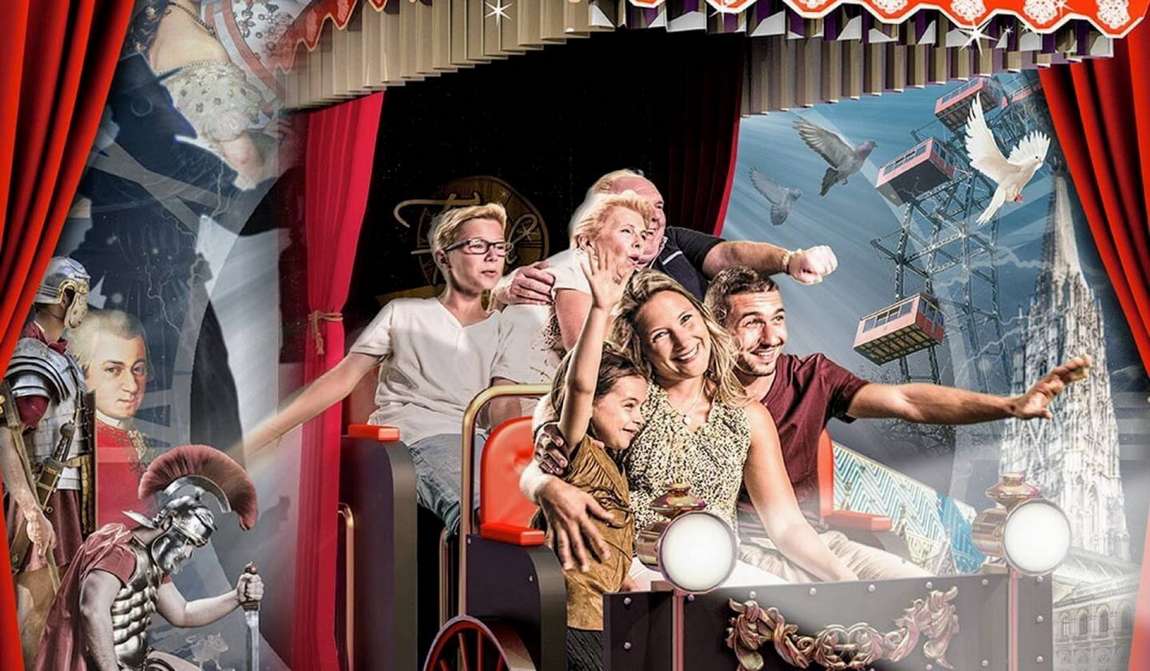
Photo: vienna.at
Fourth, an extraordinary Viennese attraction is the Strudel Show at Schönbrunn Palace. Depending on the programme you choose, you can watch the pastry chefs at work or try your hand at making these delicious pastries.
And can you imagine Vienna or Salzburg without music? No, of course! We recommend you buy your tickets for the Vienna State Opera in advance to ensure you get to the proper performance. Children over the age of 6 can visit the children's opera. A great place to experience Mozart's music in Salzburg is the Puppet Theatre, where an abridged version of The Magic Flute is performed for children.
Holidays, events and festivals
The most festive winter time in Austria is traditionally December when the Christmas markets open. After Christmas, there is a slight lull, and on New Year's Eve, many people flock to the town squares to walk around the tree and watch the fireworks. Fairs with rides for children continue into the first week of January.
Austria has another public holiday in January. As in many European countries, Epiphany is celebrated on 6 January. It is about glorifying the Magi who came to Bethlehem to worship the newly-born Jesus of Nazareth. Children dressed up as kings, and a mask procession Perchtenlauf (Perchten run) are seen chasing away winter. January is part of the ball season. The main events occur on New Year's Eve and mid-February, but there are around a hundred balls in January.
Cost of vacation
Prices in Austria are significantly lower in January than in December or summer. It is the low season for Vienna and part of the high season for the ski resorts, although the main influx of tourists occurs at the end of December and in February-March.
Airline tickets
Ticket prices to Austria in January are 5-10% lower than in December. In February, prices drop by 5-7% — tickets are cheapest at the end of winter. A flight to Vienna is usually more expensive than to Salzburg.
Accommodation
Accommodation prices in Vienna, other cities and ski resorts fluctuate during January. The first week is the most expensive, comparable to December. Then hotels and apartments gradually become cheaper. In winter resorts, prices change slightly in cities — more noticeably. In February, hotel prices in Vienna are among the lowest of the year. Ski resorts are in high season, so accommodation can be even more expensive.
Austria tour packages
Package holidays to Vienna drop in price after the Christmas and New Year period, and the difference from December prices can be considerable. Tours to winter resorts also drop slightly in price after the holidays and then rise again from February.
Food

Photo: pixabay.com
Restaurants in Austria are not cheap, and the same principle applies as in other tourist cities: the further away from the sights, the lower the prices. A Wiener schnitzel costs €15 in popular tourist restaurants and €10 in local eateries. Roughly speaking, breakfast in Vienna costs between €10 and €15 per person, and lunch or dinner between €15 and €20. Prices are higher in ski resorts: lunch in a restaurant costs from €25 to €30 per person, in a café from €15 to €25.
Shopping
Winter sales in Austria start in mid-January and last until March. Clothing and footwear from international and local brands are available at 20-30% off, with Austrian goods often characterised by original design and high quality.
Reviews of the January holidays in Austria mention that winter is an excellent time to buy skiing equipment (at least better than at home). However, it should be added that good discounts are only available towards the end of the season.
Helpful tips for traveling with children
It's hard to think of anything that could spoil a holiday in Austria in January with children. Here are a few tips to ensure the little things don't break your plans.
- Plan your wardrobe to adapt to the changeable weather in January.
- For skiing, three layers of clothing are best: thermal underwear, a fleece, a ski suit, a jacket, and trousers.
- If you're going to the Volksoper in Vienna, you don't need any special outfit, but taking a lighter pair of shoes is a good idea.
- Family-friendly hotels in winter resorts don't offer as much entertainment for children as Turkey, so pack toys, colouring books, puzzles and a travel version of a board game.
A walk through Vienna, skiing, a dip in the thermal baths — it all whets the appetite. What else can you offer your child besides schnitzel and strudel? Read Kidpassage's article on traditional Austrian cuisine and make sure the meals are delicious and varied.



